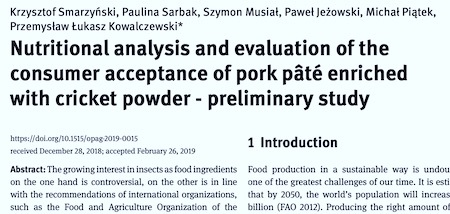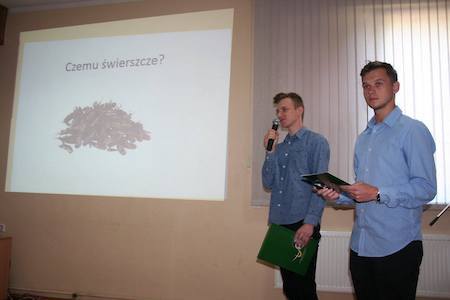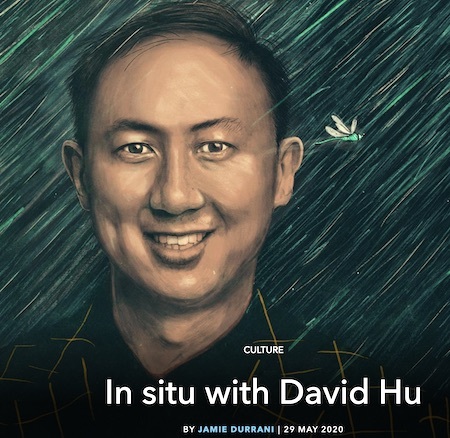Marc Abrahams's Blog, page 99
October 9, 2020
Effects of Cashew Gum and Nanoparticles on Cooled Stallion Semen
The number of published research studies about the effects of cashew gum and nanoparticles on cooled stallion semen has increased by one, with the arrival of this new study:
“Effects of Cashew Gum and Nanoparticles on Cooled Stallion Semen,” Kahynna Cavalcante Loureiro, Isabel Bezerra Lima-Verde, Anders Johannisson, Theodoros Ntallaris, Alessandro Jager, Petr Štěpánek, Marcelo da Costa Mendonça, Patrícia Severino & Jane M. Morrell, Acta Veterinaria Scandinavica, vol. 62, no. 31, 2020.
The authors are at the Institute of Technology and Research (ITP), Brazil, Tiradentes University (UNIT), Brazil, the Institute of Macromolecular Chemistry, Czech Republic, and the Swedish University of Agricultural Sciences.
(Thanks to Silvan Urfer for bringing this to our attention.)

October 7, 2020
Consumer Acceptance of Pork Pâté Enriched with Cricket Powder
Add another study to the collection that focuses on a question of consumer acceptance of pork pâté enriched with cricket powder. This one is:
“Nutritional Analysis and Evaluation of the Consumer Acceptance of Pork Pâté Enriched with Cricket Powder – Preliminary Study,” Krzysztof Smarzyński, Paulina Sarbak, Szymon Musiał, Paweł Jeżowski, Michał Piątek, and Przemysław, and Łukasz Kowalczewski, Open Agriculture, vol. 4, no. 1, 2019.
The authors, at the Nature University of Poznań, Poland, conclude:
It was shown that the cricket powder additive significantly increases the content of protein, fat and minerals. It also changes the color of the product, which is darker, and the color balance is shifted towards the blue. Consumer assessment showed that the 2% cricket powder additive allows to obtain a product of high attractiveness for consumers.
This photo shows two of the authors presenting the poster version of the research:
(Thanks to Corky White for bringing this to our attention.)

October 5, 2020
Garments that look inside-out, but aren’t [patent]
“
When a garment is turned inside-out it can become difficult to continue full use of the garment. For example, in some garments fasteners are meant to be used when a person wears the garment conventionally and are not intended to be functional when the garment is worn inside-out. Likewise, features such as pockets or belt carriers can be difficult or impossible to fully use when the garment is worn inside out. Because of this, it can sometimes be difficult to properly wear a garment inside-out.
In view of this background, the need remains for garments intended to be worn with an inside out appearance.”
To sidestep such inconveniences, Elizabeth M Girod came up with an invention – and was granted a US patent for it in 2006. A system which allows the look and feel of a fully turned-inside-out garment, but with the pockets, zips and belt-loops (etc) the correct way around.
The full details can only be appreciated by reading the patent document. US, 7350242B2, Garments Having an Inside Out Appearance
Research research by Martin Gardiner

October 4, 2020
Pocket-Sized #1036: “Ice Cream & Intense Scholars”
In this special Pocked-Sized episode #1036, Marc Abrahams extracts some flash-frozen bits of history from techno-sociologist Gus Rancatore, proprietor of Toscanini’s Ice Cream.
Today, Gus shares with us the phenomena of the intense scholar and their many idiosyncrasies.
Remember, our Patreon donors, on most levels, get access to each podcast episode before it is made public.
Seth Gliksman, Production Assistant
Available on Spotify, Apple Podcasts, Overcast, Google Podcasts, AntennaPod, BeyondPod and elsewhere!

October 2, 2020
Ig Nobel Medical Education Prize Winner Continues His Lesson
One of the nine co-winners of the 2020 Ig Nobel Prize for Medical Education is in news headlines worldwide today. Here is the certificate awarded to that winner at the 30th First Annual Ig Nobel ceremony on September 17. The certificate is signed, as per tradition, by several Nobel Prize winners.
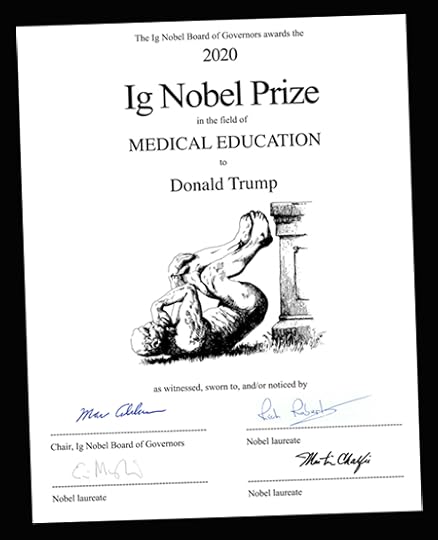
That Ig Nobel Prize for Medical Education was awarded to Jair Bolsonaro of Brazil, Boris Johnson of the United Kingdom, Narendra Modi of India, Andrés Manuel López Obrador of Mexico, Alexander Lukashenko of Belarus, Donald Trump of the USA, Recep Tayyip Erdogan of Turkey, Vladimir Putin of Russia, and Gurbanguly Berdimuhamedow of Turkmenistan, for using the Covid-19 viral pandemic to teach the world that politicians can have a more immediate effect on life and death than scientists and doctors can.
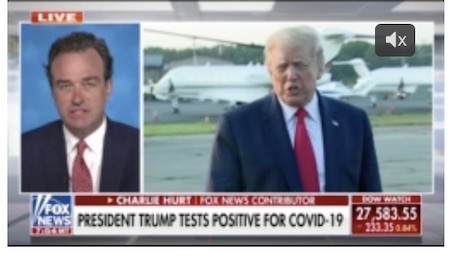
BONUS (from two days ago): “Study plumbs the influence of Ig Nobel Medical Education Prize winner Trump“

October 1, 2020
“People ask me the strangest questions”
“Luckily we found a great collaborator in Australia who studies wombats, and he sent us one through the mail. We opened the intestines up and there were these cubes inside. There are moments when you wonder if your life is real, or if it’s just some big joke.”
—Double Ig Nobel Prize winner David Hu, interviewed by Jamie Durrani in Chemistry World magazine.

September 30, 2020
Study plumbs the influence of Ig Nobel Medical Education Prize winner Trump
A new study identifies and tries to quantify the influence of one of this year’s nine co-winners of the Ig Nobel Prize for Medical Education: Donald Trump.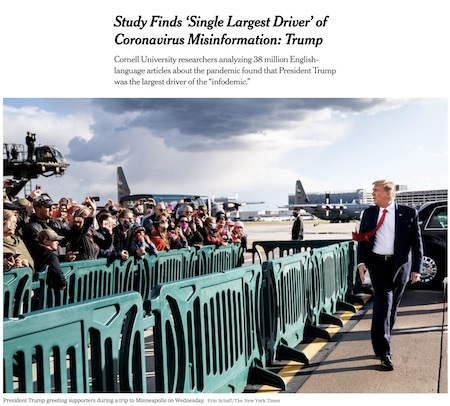
The study is “Coronavirus misinformation: quantifying sources and themes in the COVID-19‘ infodemic,’ ” by Sarah Evanega, Mark Lynas, Jordan Adams, and Karinne Smolenyak. The authors, at Cornell University and Cision Global Insights, explain:
“The COVID-19 pandemic has unfolded alongside what the World Health Organization has termed an ‘infodemic’ of misinformation.This study identifies and analyzes the most prominent topics of COVID-related misinformation… We found that media mentions of US President Donald Trump within the context of COVID-19 misinformation made up by far the largest share of the infodemic. Trump mentions comprised 37.9% of the overall misinformation conversation, well ahead of any other topics.We conclude that the President of the UnitedStates was likely the largest driver of the COVID-19 misinformation ‘infodemic’ “.
The 2020 Ig Nobel Prize for Medical Education was awarded on September 17 to Jair Bolsonaro of Brazil, Boris Johnson of the United Kingdom, Narendra Modi of India, Andrés Manuel López Obrador of Mexico, Alexander Lukashenko of Belarus, Donald Trump of the USA, Recep Tayyip Erdogan of Turkey, Vladimir Putin of Russia, and Gurbanguly Berdimuhamedow of Turkmenistan, for using the Covid-19 viral pandemic to teach the world that politicians can have a more immediate effect on life and death than scientists and doctors can.
The New York Times and other media present news about the new study.

Study plumbs the influence of Ig Nobel winner Trump
A new study identifies and tries to quantify the influence of one of this year’s nine co-winners of the Ig Nobel Prize for Medical Education: Donald Trump.
The study is “Coronavirus misinformation: quantifying sources and themes in the COVID-19‘ infodemic,’ ” by Sarah Evanega, Mark Lynas, Jordan Adams, and Karinne Smolenyak. The authors, at Cornell University and Cision Global Insights, explain:
“The COVID-19 pandemic has unfolded alongside what the World Health Organization has termed an ‘infodemic’ of misinformation.This study identifies and analyzes the most prominent topics of COVID-related misinformation… We found that media mentions of US President Donald Trump within the context of COVID-19 misinformation made up by far the largest share of the infodemic. Trump mentions comprised 37.9% of the overall misinformation conversation, well ahead of any other topics.We conclude that the President of the UnitedStates was likely the largest driver of the COVID-19 misinformation ‘infodemic’ “.
The 2020 Ig Nobel Prize for Medical Education was awarded on September 17 to Jair Bolsonaro of Brazil, Boris Johnson of the United Kingdom, Narendra Modi of India, Andrés Manuel López Obrador of Mexico, Alexander Lukashenko of Belarus, Donald Trump of the USA, Recep Tayyip Erdogan of Turkey, Vladimir Putin of Russia, and Gurbanguly Berdimuhamedow of Turkmenistan, for using the Covid-19 viral pandemic to teach the world that politicians can have a more immediate effect on life and death than scientists and doctors can.
The New York Times and other media present news about the new study.

Null Salad—A Mathematician goes salad bowling
Mathematician Jim Propp worries over a concept he’s been trying, for decades, to digest: Null Salad. Propp explains:
“If you have arugula, basil, celery, dandelion, and endive leaves, how many different tossed salads can you make?” That question, or something like it, was asked in a Math Bowl that I participated in back in high school, during my halcyon days as a mathlete. Actually, “halcyon days” are supposed to be calm days, and quiz-show-style math-smackdowns aren’t known for being calm. It was certainly an un-halcyon moment when my Math Bowl teammates were urgently saying we should buzz in with the answer 32 to that salad question, and I was saying we needed to figure out whether the judges would think that a bowl containing no ingredients at all was a valid salad. While we were debating the issue, the other team buzzed in with the answer 32, only to be told “That is incorrect.” Our team immediately buzzed in with the answer 31, which seemed likely to be the answer the judges were looking for.
We got the points, but I liked the other team’s answer better. The idea of an empty salad might seem like a purely mathematical fancy, but half a dozen years later I saw a restaurant menu that offered the null salad, or rather “Nowt, served with a subtle hint of sod all” (for the unbeatable price of 0 pounds and 0 pence)….

September 28, 2020
Comparing piano keys sounds with earthquakes [study]
Can the recorded sound of a single note played on a piano be compared to the seismic records of an earthquake? If so, how much (so)? A 2020 research project from the Golestan Institute of Higher Education, and the Department of Civil Engineering, Islamic Azad University of Kish Iran, has investigated. 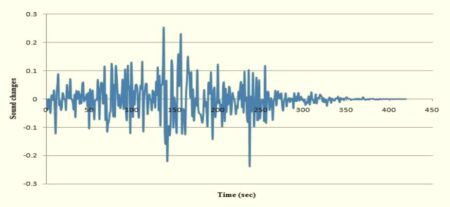
“The comparison between near-field recordings and synthetic recordings derived from piano sound showed that the highest correlation with the Loma Prieta, Niigata, Japan and Chuetsu-oki, Japan earthquakes was about 60%. Also, the lowest correlation for Northridge earthquake was about 30% and also the comparison between remote area records and synthetic records derived from piano sound showed that Friuli, Italy-01 and Borah Peak, ID-02 70% had the highest correlation. Coalinga-01 had the lowest correlation of about 40% among the selected records. The results also showed that the correlation between the selected synthetic records for the faraway fault zone is higher than the near fault state.”
See; Using the Piano Keys Sound as Artificial Accelerations in Advance Researches in Civil Engineering, Vol.2, No.2, pages: 56-64
Research research by Martin Gardiner

Marc Abrahams's Blog
- Marc Abrahams's profile
- 14 followers



